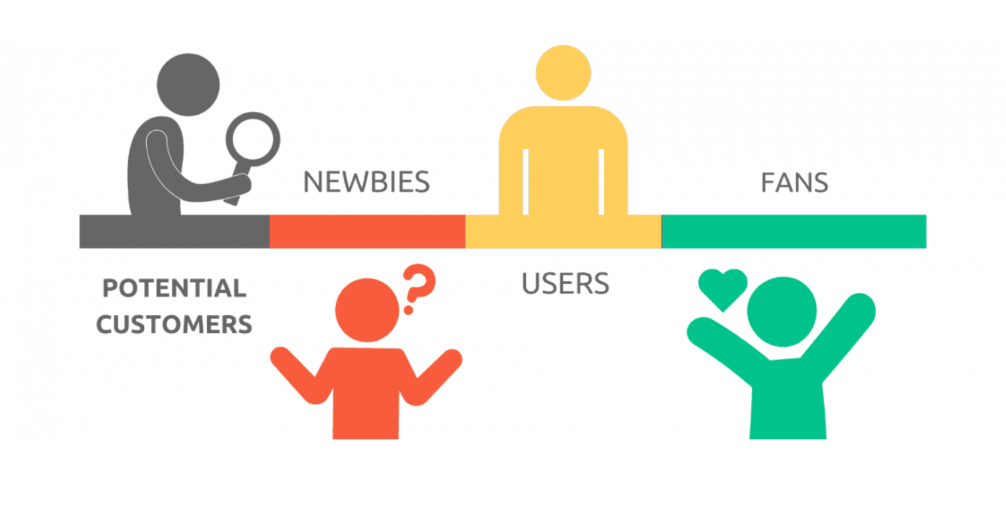Recognising that customer satisfaction forms the bedrock upon which you are constructing your e-commerce enterprise is crucial. Your customers’ happiness and loyalty are directly tied to the success and longevity of your business.
Customer Lifetime Value (CLV) is a critical metric for businesses looking to grow and succeed. It is a measure of the total value a customer brings to a business over the course of their relationship. Understanding CLV can help businesses make better decisions about how to allocate resources, optimise marketing efforts, and improve the overall customer experience.
What is Customer Lifetime Value?
Customer Lifetime Value (CLV), also known as Lifetime Value (LTV), is a crucial metric in the field of marketing and business analytics. It’s a holistic approach that considers the entirety of a customer’s relationship with a company, taking into account factors such as:
- The frequency of their purchases.
- The average transaction value.
- The duration of their relationship with the company.
- The potential for repeat purchases.
- The impact of referrals and advocacy.

In essence, CLV provides a comprehensive view of a customer’s worth to a business, beyond the initial transaction. This metric is pivotal in assessing the effectiveness of customer acquisition strategies, customer retention efforts, and overall business profitability.
Why is CLV Important?
Knowing the CLV is valuable for several reasons:
- Customer Acquisition: Understanding the CLV helps businesses determine the maximum amount they can invest in acquiring new customers. If the cost of acquiring a customer is lower than their CLV, it’s a profitable acquisition strategy.
- Customer Retention: Businesses can use CLV to identify high-value customers and focus on retaining them, as retaining existing customers often costs less than acquiring new ones.
- Segmentation: CLV allows businesses to segment customers based on their value. This enables targeted marketing efforts for different customer groups, ensuring resources are allocated efficiently.
- Profitability Analysis: By comparing CLV to customer acquisition costs and operational expenses, businesses can assess the profitability of specific customer segments and adjust their strategies accordingly.
How to improve Customer Lifetime Value?
Improving Customer Lifetime Value (CLV) is essential for the long-term success and profitability of a business. By increasing the value each customer brings over their relationship with your brand, you can maximise revenue and create a more stable business.

Here are strategies to help you enhance CLV:
- Deliver Outstanding Customer Service: Exceptional customer service is the cornerstone of any successful business. When customers feel valued and supported, they are more likely to stay loyal.
- Personalisation is Key: In the age of data, personalisation has become a game-changer. Leverage customer data to tailor marketing messages, product recommendations, and offers to individual preferences. This personal touch makes customers feel understood and appreciated.
- Focus on your ideal customer: While it’s important to retain and nurture all your customers, giving special attention to your ideal customers can yield substantial benefits. RFM is a way to segment your customers according to their buying behaviors:
- Recency: How recent is the last order?
- Frequency: How often that customer bought?
- Monetary value: What is the total revenue you got from each customer?
- Loyalty Programs That Work: Implementing a well-designed loyalty program can work wonders. Reward repeat customers with exclusive discounts, early access to products, or points-based rewards. Loyalty programs incentivise customers to keep coming back.
- Cross-Selling and Upselling Strategies: When a customer makes a purchase, don’t miss the opportunity to suggest complementary products or upgrades. Create bundle deals or product recommendations based on their buying history and preferences.
- The Power of Content Marketing: Creating valuable content can build trust and position your brand as an authority in your industry. Educate and entertain your audience, and they’ll be more likely to return for more.
- Listen to Customer Feedback: Customer feedback is a goldmine of insights. Use surveys and feedback mechanisms to understand customer needs, preferences, and pain points. Act on this feedback to improve your products and services.
In conclusion, boosting Customer Lifetime Value is a multifaceted journey that involves building strong customer relationships, providing exceptional value, and adapting to customer preferences over time. By implementing these strategies, you can not only increase CLV but also foster customer loyalty and drive long-term business success. Remember, in the quest for growth, nurturing your existing customer base is just as important as acquiring new customers.


